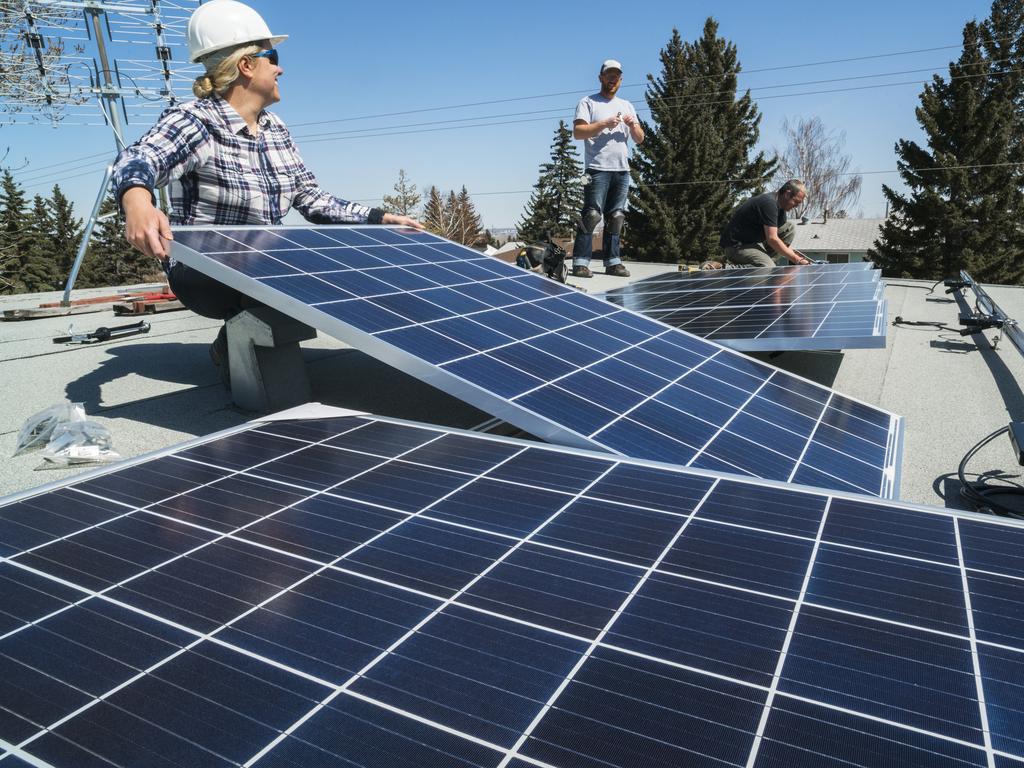Renewable energy investors fire up over power grid overhaul plan
A controversial overhaul of the power grid and network transmission reforms have sparked a backlash from the nation’s biggest renewable investors

A controversial overhaul of the power grid and network transmission reforms have sparked a backlash from the nation’s biggest renewable investors, who warn of a slug to electricity prices and up to 3000 megawatts of new clean energy projects put at risk should the scheme proposal proceed.
The Australian Energy Market Commission has proposed changes to transmission frameworks to reflect the fact that Australia’s coal-dominated power system has struggled to handle huge slabs of intermittent renewable generation in the past few years, causing headaches for clean energy developers and creating fresh volatility for grid planners.
The reform has been tied in with a larger post-2025 plan to reshape the grid being undertaken by the government-run Energy Security Board after resistance from some parts of industry to the scheme.
The Clean Energy Investor Group, which has $9bn of assets under management and is backed by Macquarie Capital, RWE Renewables and UK developer John Laing, said if the proposal went ahead there could be an extra burden of $3.4bn in higher electricity prices up[ to 2050 and 3000MW of clean energy projects seen at risk.
It raised issues with the AEMC plan for locational marginal pricing, a regional scheme where large-scale electricity suppliers would pocket higher returns if they build in more cost-effective locations and solar and wind developers would pay part of the transmission costs. Financial transmission rights would also allow generators to hedge against losses when it is expensive to deliver energy to the grid under the regional concept.
Modelling by Baringa Partners, commissioned by the CEIG, shows the cost of capital for clean energy projects is projected to increase by 150 basis points due to revenue uncertainty created by the AEMC’s proposals to move to locational marginal pricing. “Cost of capital increases for investors will flow through to wholesale price impacts for consumers. This is detrimental to both clean energy generators and energy consumers and highlights why the AEMC must revisit its proposed grid access proposals,” said CEIG chair Simon Corbell.
Modelling also forecasts that 3000MW of new renewable energy projects will be deferred due to unacceptable levels of risk associated with revenues from new projects, also creating more emissions in the system.
“There will be a major slowdown in new renewable energy development across the National Electricity Market due to these market rule change proposals. This means thermal generation stays in the market for longer, and overall greenhouse gas emissions in the NEM will be 18 per cent higher compared to the status quo — with a $500m increase in the social cost of carbon,” Mr Corbell said.
“This is a perverse outcome for investors and consumers, and quite frankly it is difficult to understand why the AEMC is persisting with this proposal. It highlights again why it should not continue with its proposed grid access changes.”
The CEIG said the cancellation of a big pipeline of renewable projects would mean state governments would be required to offer extra price support to achieve their respective renewable targets.
“Victoria, Queensland and NSW have all adopted renewable energy targets or are supporting major growth in new renewable energy zones. Due to the increased cost of capital caused by these reforms, states will have to pay more for new renewable energy projects to enter the NEM. State renewable energy targets are clearly at risk if the AEMC persists with these proposals,” said Mr Corbell.
“The AEMC grid access proposals directly impact investability of the national electricity market. Wholesale electricity prices will rise, clean energy investment will decline, and carbon emissions will increase. It is clear the public interest is not served by these proposals. They should be withdrawn.”
The CEIG instead supports renewable energy zone development, proposed in the ESB’s post-2025 NEM Design consultation.
The Clean Energy Council said the AEMC’s transmission reform would add a 1.4 per cent risk premium to new projects, as well as existing projects as they sought to refinance over the next few years. Some $18bn of project debt needs to be refinanced between now and 2025.
Australia requires at least 30,000MW of solar and wind to replace coal generation by 2040 and 47,000MW should more aggressive pollution cuts be required in response to the climate change crisis, Australian Energy Market Operator data shows.
However, investment in the renewables sector has faced challenges in 2020 partly because sections of the nation’s stretched power grid struggled to handle major new solar and wind generation sources in areas without sufficient transmission capacity.




